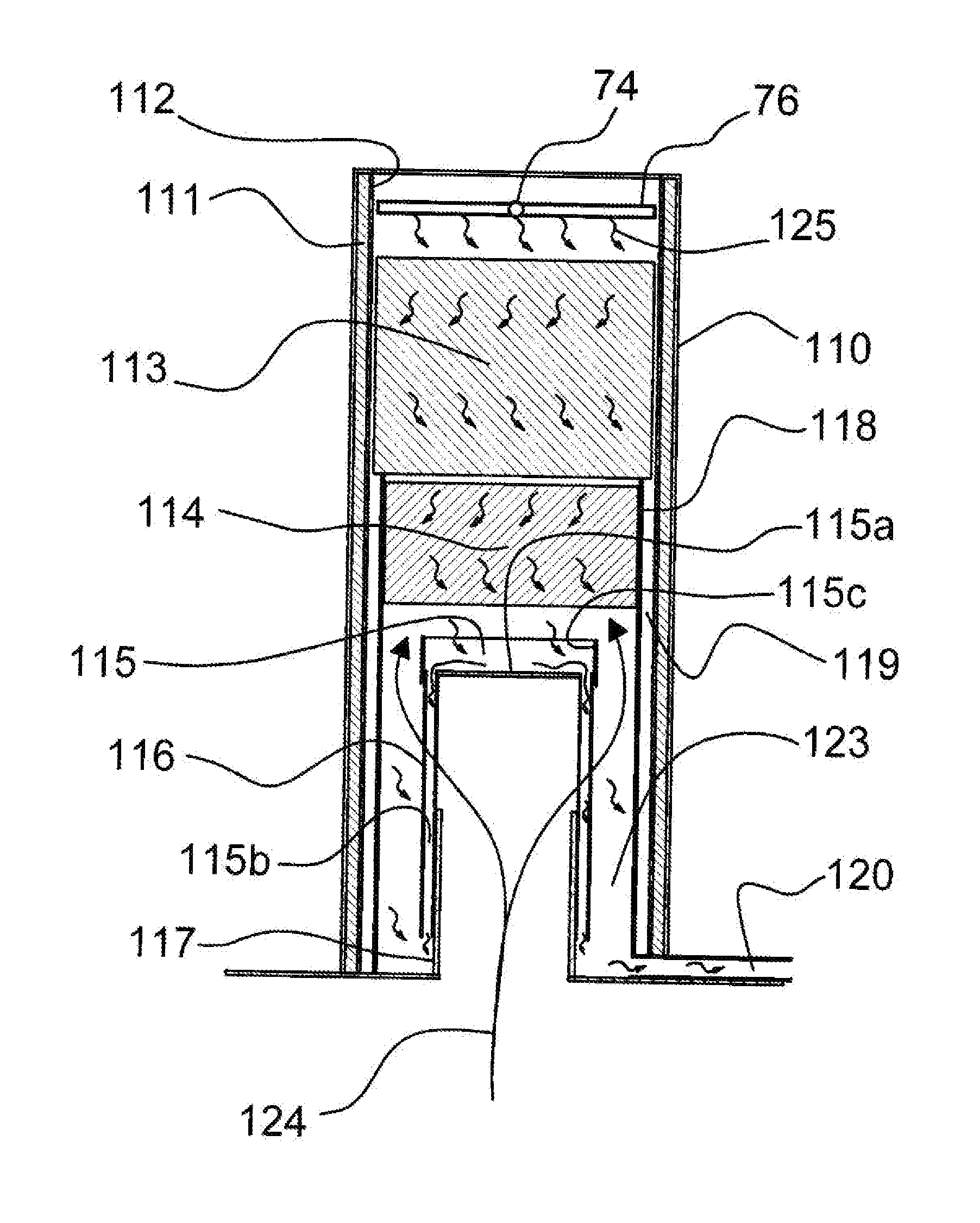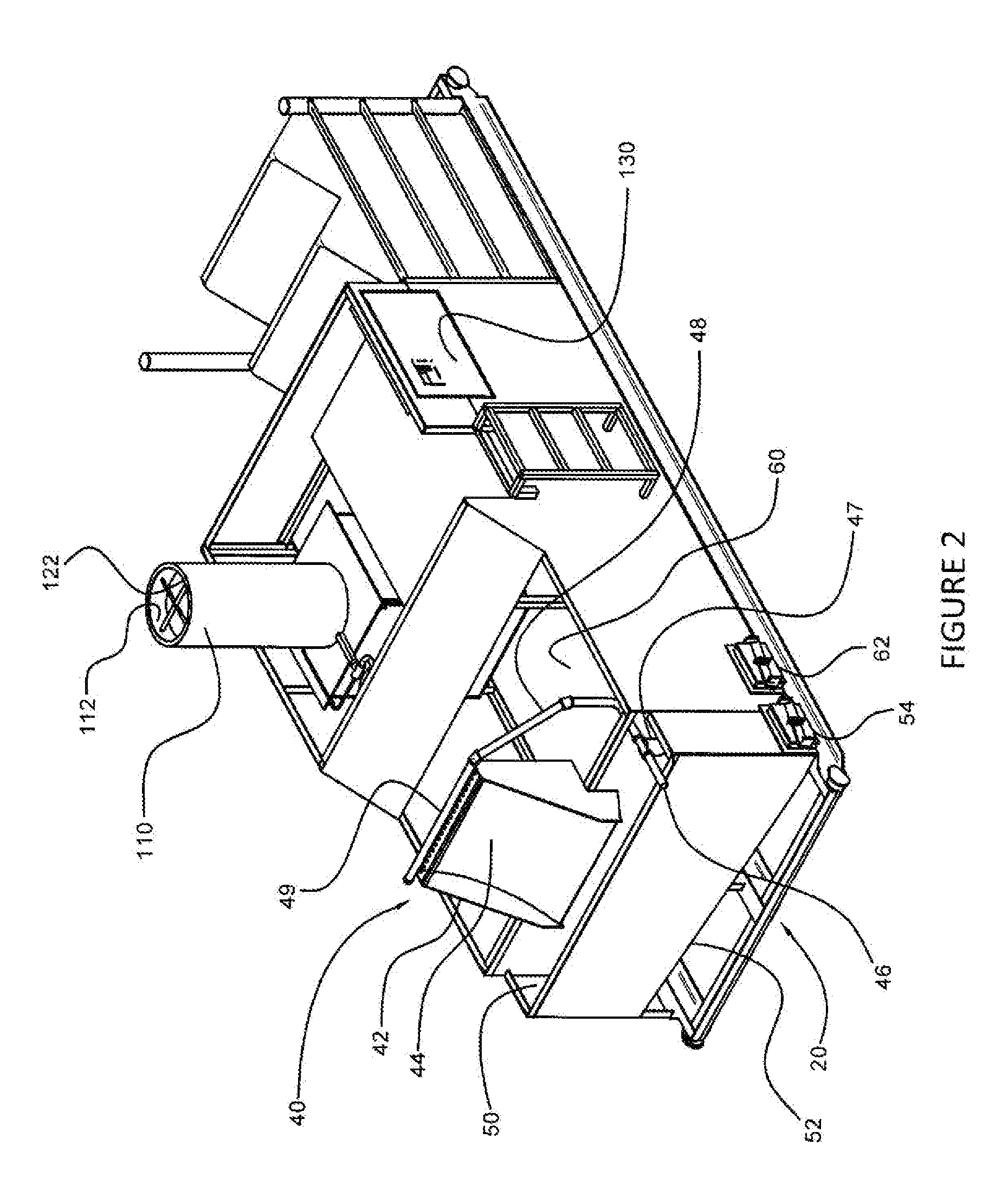;Capital and collateral
financial costs;Personnel costs for operation and maintenance;Standards and conditions for manufacture delivery, acceptance, etc.
Many environmental regulations prohibit
raw water to be discharged directly from the drilling lease surface area onto the surrounding ground regions due to the level of
contamination that may be present in the
raw water.
For example,
raw water may be contaminated with oils, soaps, chemicals and suspended
particulates originating from the drilling rig operations.
In some cases, the volume of raw water may become sufficiently great during rig operations to inhibit the efficient operation of the drilling rig as the volume of raw water interferes with the operation and movement of equipment and personnel at the
drill site.
Often, in the absence of systems allowing on-site processing, the raw water must be collected from the ditches, stored in holding tanks and eventually trucked to a remote processing center for processing and disposal.
As known to those skilled in the art, the collection, storage, transportation, processing and disposal of the raw water at the remote location can be very costly both in terms of actual handling and processing costs but also from
lost time at the drilling rig.
There are a number of inherent problems with existing
evaporator systems as listed and discussed below.
These problems include:Systems that must be operated in a batch process mode.
In these systems as any new addition of raw water to the
bulk storage tanks halts the
evaporation process and requires reheating the whole
system before
vaporization can resume;The inefficient use of
heat energy due to increasingly limited
thermal transfer from the heat source to the raw water, that may be caused by:a buildup of particulate and scale that coats various parts of the
system such as a
heat exchanger, promoting increasing heat loss out the
heating system exhaust stack; and / orthe need to thermally heat un-separated, suspended
particulates in the raw water tank as the density increases;Unnecessary fuel consumption, due to overall
system inefficiencies.
In this case, fuel consumption may have to be increased to meet target processing rates resulting in higher costs to the operator and greater volumes of
combustion contaminants being discharged to the
atmosphere;Foaming and frothing of hot or boiling solutions over the sides of the tank into the surrounding environment that may be occurring in close proximity to personnel.
Such problems may also require the use of anti-foaming agents and system supervision;Frequent and time-intensive system cleaning;Intensive and / or invasive onsite supervision to ensure the
evaporator system flow dynamics are within certain narrow parameters to prevent automatic
shut down and restarts;
Heating element damage from over-heating due to concentrate accumulation on a
heat exchanger; andSoaps and oils present in the raw water that may cause surface layering that inhibits the
evaporation process.
Generally, these systems must also reheat the
water mass each time additional water is introduced into the reservoir thus significantly slowing the over-all
evaporation process.
Over time, evaporation of the water from the tank with the added
contaminated water increases the concentration of the non-evaporated constituents within the tank.
In high temperature driven evaporators, because of the high temperature differential needed to pass heat from the source through the
heating element into the water, and because of the presence of chemical salts and other contaminants, the
heating element is subject to scaling,
fouling and
corrosion.
Heating element coating creates a significant decrease in efficiency within a very short time and requires frequent and intensive cleaning.
Additionally, from the moment the
heating element becomes coated (e.g. with scaling), which is almost instantaneous upon system
start up, heat is increasingly inhibited from passing through the element into the water and thus is wasted out the
flue stack.
Therefore these systems are not scalable on site.
Further still, in these systems, the increasing total solids
mass concentration also decreases the efficiency of the
evaporator due to the applied heat being absorbed by any solids in the tank.
Still further, another significant problem with various prior art systems is the stratification of the waste water due to any soaps or organic material that may be present in the waste water.
The presence of either or both of these contaminants will often generate a surface skim or layer on top of the waste water that interrupts the
water mass evaporative process.
Moreover,
soap and / or organic materials can cause significant foaming and frothing that can often result in overflowing the heating tank and
spillage onto the ground requiring expensive clean-up operations and / or putting the operator at substantial environmental and
safety risk.
A still further problem with various evaporators is
particulate material is not removed from the raw water prior to transferring the raw water into the evaporator tank thereby resulting in the need to remove the accumulated solids frequently and / or, as noted above, the unnecessary heating of particulate matter during evaporation.
The
sludge and cleaning water, as a product of the cleaning process, must also be hauled away which increases the total cost of operating the evaporator.
In other words, heretofore there has been no incentive for mobile treatment of
flue gasses because there is generally no regulation on
diesel engine exhaust to justify the cost of doing so.
For example, for a typical 500 kW engine-generator set, each 500 kW engine, capable of evaporating over 10 cubic meters of water per day, will exhaust approximately 91-273 cubic meters per minute of
acid gas exhaust into the environment thereby polluting the environment and
wasting the heat energy contained therein.
 Login to View More
Login to View More 


